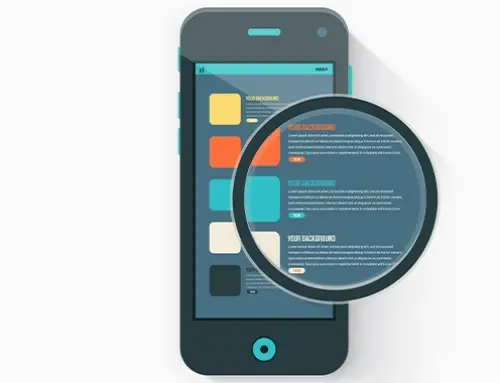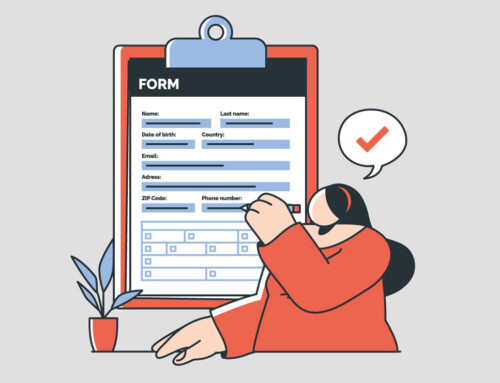Contents
In an era where innovation and creativity are paramount, intellectual property (IP) disputes have emerged as significant legal and economic challenges. Intellectual property, which includes patents, trademarks, copyrights, and trade secrets, provides creators and inventors with exclusive rights to their work, fostering an environment that encourages continued innovation and artistic expression. However, the same laws that protect these rights can also lead to conflicts when alleged violations occur. Intellectual property disputes can involve a wide array of parties, from multinational corporations battling over patent infringements to small businesses and individual artists seeking to defend their trademarks or copyrights. These disputes often present complex legal questions and can have far-reaching implications for market competition, economic growth, and the protection of intellectual assets. This article explores the multifaceted nature of IP disputes, examining their causes, the legal frameworks governing them, and their impact on various industries. Understanding these conflicts is crucial for navigating the intricate landscape of intellectual property and ensuring that the rights of creators and inventors are upheld while promoting a fair and competitive marketplace.
Intellectual Property Infringement
Intellectual property infringement refers to the unauthorized use, reproduction, or distribution of someone else’s intellectual property. This includes patents, trademarks, copyrights, and trade secrets. Each type of IP has specific protections and legal frameworks to address infringement.
Types of Intellectual Property Infringement
- Patent Infringement: Patent infringement occurs when someone uses, makes, sells, or offers to sell a patented invention without the patent holder’s permission. For example, a company might manufacture a product that incorporates a patented technology without obtaining a license from the patent holder.
- Trademark Infringement: Trademark infringement involves using a trademark that is identical or confusingly similar to a registered trademark without permission, which can lead to consumer confusion about the source of goods or services. For instance, a business might use a logo that closely resembles the logo of another established brand, potentially misleading consumers.
- Copyright Infringement: Copyright infringement involves copying, distributing, performing, publicly displaying, or creating derivative works from a copyrighted work without the copyright holder’s consent. For example, a person might upload a movie to the internet without the permission of the copyright owner, allowing others to download it for free.
- Trade Secret Misappropriation: Trade secret misappropriation involves the unauthorized acquisition, use, or disclosure of a trade secret through improper means, such as theft, bribery, misrepresentation, or breach of a duty to maintain secrecy. For example, an employee might take confidential business information from their employer and use it to benefit a competing company.
Consequences of IP Infringement
The consequences of IP infringement can be severe, including:
- Legal Penalties: Infringers may face lawsuits resulting in injunctions (orders to stop the infringing activity), monetary damages, and potentially punitive damages.
- Financial Loss: The infringer may have to pay significant fines, royalties, or compensation to the IP holder.
- Reputational Damage: Companies or individuals found guilty of IP infringement can suffer reputational harm, which can affect their business relationships and customer trust.
Legal Protections Against IP Infringement
Various legal mechanisms are in place to protect IP rights and address infringement, including:
- Cease and Desist Letters: An initial step where the IP holder formally requests the infringer to stop the infringing activity.
- Litigation: IP holders can file lawsuits to enforce their rights and seek remedies through the courts.
- Customs Enforcement: IP holders can work with customs authorities to prevent the importation of infringing goods.
- Alternative Dispute Resolution (ADR): Methods such as mediation or arbitration can be used to resolve IP disputes without going to court.
How to Protect Intellectual Property Rights
Protecting your intellectual property (IP) rights from infringement involves a combination of legal measures, proactive strategies, and vigilant monitoring. Here are some key steps to help safeguard your IP:
- Understand Your IP and Register It
To protect your intellectual property, first identify the type of IP you have, such as patents, trademarks, copyrights, or trade secrets. For patents, file with the relevant patent office to safeguard your inventions. To protect brand names, logos, and slogans, register trademarks. For original works of authorship like literature, music, and software, ensure you register copyrights. For trade secrets, implement measures to maintain confidentiality, such as using non-disclosure agreements (NDAs).
- Use Clear and Visible Notices
To protect your intellectual property, mark it with appropriate notices such as “©” for copyright, “™” for trademarks, and “®” for registered trademarks. Additionally, use patent numbers on products to inform the public and deter potential infringers.
- Maintain Detailed Records
Keep comprehensive records of the creation and development of your IP. This includes drafts, prototypes, and any documentation that can establish ownership and originality.
- Implement Strong Contracts
To protect intellectual property shared with employees, contractors, and business partners, use non-disclosure agreements (NDAs), confidentiality agreements, and non-compete clauses. Additionally, include IP ownership clauses in employment contracts and agreements with independent contractors to ensure that any IP created during employment, or a project belongs to your company.
- Monitor and Enforce Your Rights
To protect your intellectual property, regularly search for potential infringements using online tools and IP watch services, and monitor marketplaces, social media, and industry publications for unauthorized use of your IP. For enforcement, start by sending cease and desist letters to infringers and, if necessary, work with legal counsel to take further action, including filing lawsuits.
- Educate Employees and Partners
Train employees on the importance of IP protection and the specific measures your company uses and ensure that partners and collaborators understand and respect your IP rights.
- Use Technology to Protect Digital IP
Implement digital rights management (DRM) and watermarking for digital products and use encryption and secure access controls to protect digital files and trade secrets.
- Consider International Protection
If you operate globally, consider registering your IP in other countries where you do business and utilize international treaties like the Patent Cooperation Treaty (PCT) and the Madrid Protocol for trademarks to streamline the registration process in multiple jurisdictions.
- Engage with IP Professionals
Consult with IP attorneys and specialists to develop a robust IP protection strategy, and use patent agents, trademark attorneys, and other IP professionals to assist with registration and enforcement.
- Leverage IP Insurance
Consider purchasing IP insurance to cover the costs associated with enforcing your rights and defending against infringement claims.
Remedies for Intellectual Property Infringement Disputes
Intellectual property infringement disputes can be resolved through various remedies, depending on the nature and severity of the infringement. Here are some common remedies for IP dispute:
Injunctive Relief
- Preliminary Injunction: A court order issued early in a lawsuit that prevents the defendant from continuing the infringing activity until the case is resolved.
- Permanent Injunction: A final court order issued after a full trial, permanently preventing the defendant from engaging in the infringing activity.
Monetary Damages
- Actual Damages: Compensation for the actual losses suffered by the IP holder due to the infringement.
- Statutory Damages: Predetermined damages outlined in statutes that the plaintiff can elect instead of actual damages. This is common in copyright and trademark cases.
- Punitive Damages: Additional damages intended to punish the infringer for particularly egregious conduct and to deter future infringement.
Attorney’s Fees and Costs
- In some cases, the prevailing party may be awarded attorney’s fees and court costs.
Seizure and Destruction of Infringing Goods
- Courts may order the seizure and destruction of goods that infringe on the IP holder’s rights.
Corrective Advertising
- In trademark disputes, courts may require the infringer to undertake corrective advertising to rectify any consumer confusion caused by the infringement.
Licensing Agreements
- The parties may settle the dispute by agreeing to a licensing arrangement, where the infringer agrees to pay for the right to use the IP.
Alternative Dispute Resolution (ADR)
- Mediation: A neutral third party helps the disputing parties reach a mutually agreeable solution.
- Arbitration: A neutral third party makes a binding decision on the dispute, which is usually faster and less formal than a court proceeding.
Declaratory Judgments
- A court may issue a declaratory judgment to determine the rights and obligations of each party without awarding damages or ordering injunctive relief.
How to Identify a Problem Related to the Protection of Intellectual Property
One significant problem related to the protection of intellectual property (IP) is the challenge of enforcing IP rights in the digital age. The rise of the internet and digital technologies has made it easier for individuals and organizations to infringe upon IP rights through unauthorized reproduction, distribution, and access to protected content. This includes issues such as digital piracy, unauthorized streaming, and the widespread sharing of copyrighted materials on online platforms. The global nature of the internet further complicates enforcement, as IP infringement can cross multiple jurisdictions, making it difficult for rights holders to track and address violations effectively. The rapid pace of technological advancement outstrips the development of corresponding legal frameworks, resulting in a gap that infringers can exploit. This undermines the value of IP and poses significant financial and reputational risks to creators, inventors, and businesses.
Identifying a problem related to the protection of intellectual property (IP) involves several key steps. First, it is crucial to monitor for infringement. Regularly searching online for unauthorized use of your IP using search engines, social media platforms, and e-commerce websites is essential. Utilizing specialized IP watch services and tools that track the use of patents, trademarks, and copyrighted content can also help in identifying potential violations.
Analyzing market and industry trends is another important step. Keeping abreast of industry news and trends can help identify common issues and emerging threats related to IP protection. Attending industry conferences and seminars provides opportunities to learn about new challenges and solutions in IP enforcement.
Conducting regular audits of your IP portfolio ensures all IP assets are properly registered and documented. These audits can help identify any gaps in protection or areas where your IP might be vulnerable to infringement.
Engaging with legal and IP experts is also beneficial. Consulting with IP attorneys and professionals can provide insights into potential IP protection issues and help identify specific risks. Participating in IP forums and networks allows you to share experiences and learn from others facing similar challenges.
Monitoring competitors is another effective strategy. Keeping an eye on competitors can reveal if they are infringing on your IP or facing similar IP issues. Analyzing competitor products and services for potential IP violations can also provide valuable information.
Customer and market feedback should not be overlooked. Listening to customer feedback and reviews can alert you to counterfeit or infringing products. Using surveys and market research helps identify any IP-related issues affecting your brand reputation and market presence.
Evaluating digital and technological vulnerabilities is essential in today’s digital age. Assessing your digital assets and online presence for vulnerabilities to IP theft, such as inadequate digital rights management (DRM) or lack of watermarking, is crucial. Implementing robust cybersecurity measures helps protect your digital IP.
Staying informed about changes in the legal and regulatory environment is vital. Changes in IP laws and regulations in your jurisdiction and globally can impact the protection and enforcement of your IP rights. Identifying any legal ambiguities or gaps that might affect your ability to protect your IP effectively is necessary.
By systematically monitoring, analyzing, and engaging with various resources and stakeholders, you can identify potential problems related to the protection of intellectual property and take proactive measures to address them.
Intellectual Property Disputes Cases
Intellectual property disputes can arise in various forms, including patent infringement, trademark infringement, copyright infringement, and trade secret misappropriation. Here are some intellectual property disputes examples in each category:
Patent Infringement
Pfizer Inc. vs. Teva Pharmaceuticals (2013): Pfizer sued Teva for infringing on its patent for the drug Viagra. The court ruled in favor of Pfizer, preventing Teva from releasing a generic version until the patent expired.
Trademark Infringement
Louis Vuitton Malletier vs. Haute Diggity Dog, LLC (2007): Louis Vuitton sued Haute Diggity Dog for selling dog toys that mimicked Louis Vuitton’s trademarked products. The court ruled in favor of Haute Diggity Dog, stating that the toys were a parody and did not cause consumer confusion.
Adidas vs. Payless Shoesource (2008): Adidas sued Payless for selling shoes with similar designs to Adidas’ three-stripe trademark. Adidas won the case and was awarded over $300 million in damages.
Copyright Infringement
Oracle America, Inc. vs. Google, Inc. (2010): Oracle sued Google for using Java APIs in the Android operating system without a license. The case went through multiple trials and appeals. In 2021, the Supreme Court ruled in favor of Google, stating that its use of the APIs was fair use.
MGM Studios, Inc. vs. Grokster, Ltd. (2005): MGM sued Grokster for distributing software that allowed users to share copyrighted files. The Supreme Court ruled in favor of MGM, stating that Grokster was liable for inducing copyright infringement.
Trade Secret Misappropriation
Waymo LLC vs. Uber Technologies, Inc. (2017): Waymo, a subsidiary of Alphabet Inc., sued Uber for allegedly stealing trade secrets related to self-driving car technology. The case was settled, with Uber agreeing to pay Waymo approximately $245 million in equity and ensuring that it would not use Waymo’s technology.
DuPont vs. Kolon Industries (2011): DuPont sued Kolon Industries for stealing trade secrets related to Kevlar, a high-strength synthetic fiber. The court ruled in favor of DuPont, awarding $919.9 million in damages. Kolon later settled for $275 million.
These cases highlight the complexities and high stakes involved in IP disputes across different domains.
Case Study: Apple Inc. vs. Samsung Electronics Co., Ltd.
Background
The legal battle between Apple Inc. and Samsung Electronics is one of the most notable cases of intellectual property rights violations in recent history. The dispute began in April 2011, when Apple filed a lawsuit against Samsung, accusing it of copying the design and functionality of the iPhone and iPad.
Allegations
Apple’s claims included:
- Design Patent Infringement: Apple claimed that Samsung copied the design of its iPhone, specifically the rounded corners, the bezel, and the grid of icons on the user interface.
- Utility Patent Infringement: Apple accused Samsung of infringing on several utility patents related to the functionality of the iPhone, such as the “bounce-back” effect when scrolling, and the tap-to-zoom feature.
- Trade Dress Infringement: Apple argued that Samsung’s products mimicked the overall look and feel of its devices, which could confuse consumers.
Legal Proceedings
The case was filed in the United States District Court for the Northern District of California. Samsung counter-sued Apple, alleging that it infringed on several of Samsung’s patents.
Key Phases of the Case
- Initial Verdict (August 2012): A jury awarded Apple over $1 billion in damages, finding that Samsung had willfully infringed on several of Apple’s patents.
- Appeals and Retrials: The verdict led to numerous appeals and retrials. Samsung sought to reduce the damages, while Apple aimed to protect its intellectual property and uphold the initial verdict.
- Supreme Court Ruling (December 2016): The U.S. Supreme Court ruled in favor of Samsung, stating that the damages related to design patent infringement should be based on the component of the product that infringed, not the entire product. This ruling sent the case back to lower courts to reassess the damages.
Resolution
After several years of litigation, the two companies finally reached a settlement in June 2018. The terms of the settlement were not disclosed, but the resolution marked the end of a lengthy and costly legal battle.
Remedies and Outcomes
- Monetary Damages: Samsung paid Apple an undisclosed amount as part of the settlement. Initially, Apple was awarded over $1 billion, but the amount was reduced through various appeals.
- Injunctive Relief: Apple sought injunctions to prevent the sale of certain Samsung products in the U.S., but these were largely unsuccessful.
- Design and Functional Changes: Samsung made modifications to its product designs and functionalities to avoid further infringement claims.
Impact and Implications
- Innovation and Competition: The case highlighted the intense competition in the smartphone market and the importance of protecting intellectual property to foster innovation.
- Legal Precedents: The rulings set important legal precedents regarding design patents, particularly the Supreme Court’s decision on how damages should be calculated for design patent infringements.
- Industry Practices: The case underscored the need for companies to carefully navigate IP laws and ensure that their products do not infringe on existing patents and designs.
The Apple vs. Samsung case serves as a crucial example of the complexities involved in intellectual property disputes. It underscores the importance of robust IP protection strategies and the potential consequences of infringement. The resolution of the case also highlights the potential for lengthy legal battles and the role of settlements in bringing such disputes to a close.
Conclusion
In conclusion, the intricate landscape of intellectual property (IP) disputes underscores the importance of robust legal frameworks and proactive strategies for protecting intellectual assets. As the digital age amplifies the potential for unauthorized use and distribution of IP, creators, and businesses must navigate a complex web of legal protections to safeguard their innovations. From high-profile cases like Apple vs. Samsung to the myriad challenges faced by smaller entities, IP disputes highlight the delicate balance between encouraging innovation and enforcing IP rights. By understanding the causes, legal remedies, and preventive measures, stakeholders can better protect their intellectual property, ensuring continued innovation and fair competition in the marketplace. The evolving nature of technology and global markets demands continuous vigilance and adaptation to uphold the integrity of intellectual property rights.
Frequently Asked Question
1.Can I sue someone for copying my work if I haven’t registered my copyright?
Yes, you can sue someone for copying your work even if you have not registered your copyright. In the United States, copyright protection automatically exists from the moment the work is created and fixed in a tangible form. To strengthen your case, it is generally advisable to register your copyright as soon as possible. This not only provides the legal benefits mentioned but also serves as a strong deterrent against potential infringers.
Disclaimer: The content provided on this blog is for informational purposes only and does not constitute legal, financial, or professional advice.






